Services on Demand
Journal
Article
Indicators
-
 Cited by SciELO
Cited by SciELO
Related links
-
 Similars in
SciELO
Similars in
SciELO
Share
Latin American applied research
Print version ISSN 0327-0793
Lat. Am. appl. res. vol.33 no.4 Bahía Blanca Oct./Dec. 2003
A new approach to Wiener-like modeling
L. R. Castro1,O. E. Agamennoni2, and C. E. D'Attellis3
1 Dto. de Matemática, Univ. Nac. del Sur, 8000 Bahía Blanca, Argentina
lcastro@criba.edu.ar
2 Dto. de Ing. Eléctrica y de Comp. - C.I.C., Univ. Nac. del Sur, 8000 - Bahía Blanca, Argentina
ieagamen@criba.edu.ar
3 Dto. de Matemática, Fac. de Ingeniería, Univ. de Buenos Aires, C1063ACV - Buenos Aires, Argentina
ceda@favaloro.edu.ar
Abstract ¾ In this paper we propose a Wiener-like approximation scheme that uses Rational Wavelets for the linear dynamical structure and Orthonormal High Level Canonical Piecewise Linear functions for approximating the nonlinear static part. This structure allows to approximate anynonlinear, time-invariant, causal dynamic systems with fading memory and has the following advantages: capability of time-frequency location, design of the linear dynamic part taking into account the a priori knowledge of the system, and minimum number of parameters of Orthonormal High Level Canonical Piecewise Linear functions determined straightforwardly.
Keywords ¾ Nonlinear Identification. Wiener Modeling. Wavelets. ONPWL Functions.
I. INTRODUCTION
Wiener structure consists of two different blocks in cascade: a linear single-input multiple-output dynamic system and a multiple-input single-output memory-less nonlinear mapping. In its original work, Wiener (1956) used Laguerre filters and Hermite polynomials for the linear and nonlinear part, respectively. But its numerical complexity (see Billings (1980)) has restricted the use of discrete versions of Wiener series to few applications, as shown in Korenberg (1982). In order to improve the original Wiener's structure, different schemes have been proposed (Söderstrom and Stoika (1989), Korenberg and Paarmann (1991), de Figueiredo and Chen (1993), Sentoni et al.(1996) and Castro et al. (1999, 2002)).
In this article we propose to use rational wavelet system transfer functions (as defined in Pati, (1992)) for approximating the linear dynamic part. The selection of the linear filters is based on results developed in the theory of wavelets in signal processing and allows to build up a constructive modeling strategy. This procedure also leads to a tailored identification structure of the linear part that has two important features: the capability of time-frequency location and the design of the linear dynamic part taking into account the a priori knowledge of the system.
For modeling the static nonlinearity we have chosen Orthonormal High Level Canonical Piecewise Linear (ONPWL from now on) functions (see Lin et al.(1994), Kang and Chua (1978), Julián et al.(1999, 2000)) similarly as in Castro et al.(1999). In particular, the class of all continuous PWL functions defined over a compact domain in Rm, partitioned with a simplicial boundary configuration (see Chien and Kuh (1977)), is considered. This choice has been motivated by several facts: this class of functions uniformly approximate any continuous nonlinear function defined over a compact domain in Rn (see Chien and Kuh (1977), Julián et al.(1999, 2000)) and the canonical expression introduced in Julián et al.(1999) uses the minimum and exact number of parameters. As a consequence of this, an efficient characterization is obtained from the viewpoint of memory storage and numerical evaluation. Another relevant aspect is that the parameters of the ONPWL functions associated to the approximation of the nonlinear function can be obtained efficiently via the resolution of a linear system characterized by a lower triangular full rank matrix (Julián et al.(1999, 2000)).
With the proposed structure it is possible to obtain a compact approximation of nonlinear discrete, time-invariant, causal systems with fading memory using a finite number of rational wavelet system transfer functions and an ONPWL function with a certain number of parameters which can be determined straightforwardly.
The paper is organized as follows. In Section II we present some definitions and well known results that will be used throughout the article. We also define the rational wavelet system function and describe its localization properties and give a brief description of the ONPWL functions as well. In Section III we present the approximation structure proposed and state the approximation theorem. In Section IV we give a constructive example and in Section V conclusions are drawn.
II. GENERAL BACKGROUND
In this section we give the fundamentals on Wiener modeling, rational wavelet systems and canonical ONPWL functions. For details on Wiener approximation scheme, the reader is referred to Wiener (1956) and Schetzen (1980); for details on Hardy spaces see Duren (1970), Garnett (1981) or Hoffman (1988). Also, readers not familiar with wavelet theory can consult, for example, Chui (1992), Daubechies (1992), Kaiser (1994), Strang and Nguyen (1996), Mallat (1998). Details on PWL functions can be found in Chien and Kuh (1977), Kang and Chua (1978), Lin et al.(1994) and Julián et al.(1999, 2000).
A. Wiener modeling
A bounded-input bounded-output (BIBO) stable nonlinear system can be represented by the model proposed in Wiener (1956) and Schetzen (1980)
y(k+1) = f (v0[k],v1[k],...), (1)
where f : l¥ ® R is a nonlinear static mapping and vi[k] is the output of the ith component of the linear system chosen. This approach allows the identification of the system to be reduced to two simpler steps: the identification of a linear system and the interpolation of a nonlinear static function using some adequate structure. In its original formulation, Wiener proposed to represent the linear dynamical system and the nonlinear static mapping using Laguerre filters and Hermite polynomials, respectively.
One problem related to the use of Laguerre filters is its pole location. This is not a trivial problem since the system is nonlinear and, in consequence, the optimum value of the pole depends, in general, not only on the amplitude and nature of the signal but also on the selected order. Wiener's original formulation does not depend, however, on the specific value of the pole, but adequate choice of this parameter can reduce significantly the number of elements of the basis needed and, in consequence, the number of parameters. The second step involves the approximation of the nonlinear functional f in Eqn. (1). This requires the choice of an efficient representation, from the point of view of number of parameters, which must be able to uniformly approximate any continuous function.
Other models that leave Laguerre filters as in the original formulation and use piecewise linear functions to approximate the static nonlinear function have also been proposed by Billings (1980), Sontag (1995) and Castro et al.(1999).
B. Rational Wavelet Systems
In this section we define the so called wavelet system transfer functions that will be used in Section III to approximate the linear dynamic part of the model.
Frames1 of rational wavelets were first defined by Pati (1992) and Pati and Krishnaprasad (1994), and later generalized by Ward and Partington (1997).
We note with P+ = {s = x + iy : x > 0} the right half complex plane and H2 (P+) the Hardy space of analytic functions on P+ . The elements of H2 (P+)may be identified with transfer functions of causal input-output stable, linear time-invariant systems.
Through the remainder of the article we will note with H2R(P+) the space of functions which are Laplace transform of functions in L2 ([0,+¥)) and by RH2 (P+) the space of real rational functions in H2 (P+), i.e. rational functions in H2 (P+)with real coefficients.
Let Y Î RH2 (P+) be an admissible analyzing wavelet on the imaginary axis; so the discrete wavelets with mother wavelet Y may be defined by (for details see Pati (1992))
Ym,n (w)= am/2Y(amw - inb0), (2)
being a > 0,Y(w) = Y (iw). Then exist a >0 and b0 such that  forms a frame for H2 (P+) (see Daubechies (1992)). Thus, any F Î H2 (P+), can be represented as
forms a frame for H2 (P+) (see Daubechies (1992)). Thus, any F Î H2 (P+), can be represented as
 , (3)
, (3)
being S the frame operator associated with the frame  .If F Î H2 R(P+), the idea is to consider (3) as a decomposition of H2 (P+) using functions of RH2 (P+). Now, if Y Î RH2 (P+) is an analyzing wavelet, truncation of the series (3) will not, in general, result in real-rational functions. For solving this problem, the so called wavelet system (WS) transfer function is defined.
.If F Î H2 R(P+), the idea is to consider (3) as a decomposition of H2 (P+) using functions of RH2 (P+). Now, if Y Î RH2 (P+) is an analyzing wavelet, truncation of the series (3) will not, in general, result in real-rational functions. For solving this problem, the so called wavelet system (WS) transfer function is defined.
Definition II..1 Given Y Î RH2 (P+), a wavelet system transfer function is defined as follows,
 , (4)
, (4)
m Î Z,n Î N,am,n Î C. For m Î Z, n = 0, define Gm,0 = am,0Ym,0,where am,0 is real for all m.
From Eqn. (4), Gm,n Î RH2 (P+) and it is possible to re-write Eqn. (3) as a decomposition of H2 (P+) via real-rational functions.
Theorem II..2 Let Y Î RH2 (P+); then any F Î H2R(P+) can be represented as
 | ,(5) |
where Fm,n is a wavelet system transfer function defined by Eqn. 4, being

Eqn. (5) is the so called wavelet system decomposition (WSD) of F Î H2R (P+).
Proof: See Pati (1992).
A rational admissible analyzing wavelet in H2R (P+) is the function
 | , (6) |
whose inverse Laplace transform is
 | , (7) |
B.1. Time-Frequency Localization of Wavelet Systems
Time-frequency localization is perhaps the most useful property of WS decomposition and it arises from translations and dilations of the analyzing wavelet Y. Time and frequency localization are precisely defined, for example, in Mallat (1998) and they are related to the time and frequency concentration of a function, i.e. intervals exist in the time or frequency domains that contain 'most' of the energy of the function. Denoting W(Y) = [w0 (Y) ,w1 (Y)] the interval of frequency concentration of Y and R (Y) = [t0 (Y) ,t1 (Y)] the interval of time concentration of Y, the energy concentration of Y in the time-frequency plane is the rectangle or Heisenberg's box Q=W (Y) ´ R (Y). Then the energy of each WS transfer function is concentrated on the following rectangles
 | (8) |
Due to symmetry about w = 0, only positive frequencies are to be considered. It is worth to remark two important features of the time-frequency localization. Near t = 0 the time localization of each wavelet system is good but the frequency localization is poor, giving the advantage that relatively few terms are required near the time-origin to capture a broad range of frequency components. For t >> 0, time localization is poor while frequency localization is very good, so it is possible to 'zoom in' on narrow frequency bands.
C. Orthonormal Canonical Piecewise Linear Functions
In this section we give a brief description of the canonical ONPWL functions that will be used for approximating the nonlinear static part of the proposed model. The canonical representation of PWL functions was originally introduced by Chua and Kang (1977), Kang and Chua (1978) in the context of nonlinear circuit theory. Later on, the existence of a canonical representation for a PWL function in Rm was proved by Lin (1994). However, the first PWL expression able to represent PWL mappings defined on domains of arbitrary dimension was the representation proposed in Julián et al.(1999). In this paper, we use the orthonormal definition of the PWL functions given afterwards in Julián et al.(2000) to represent the non-linear static mapping.
Definition II..3 Afunction f : D Ì Rn ®Rm where D is a compact set, is a PWL function if and only if it satisfies
i) The domain D can be partitioned into a finite number of polyhedral regions R(i),i =1,... ,N (such that  ) by a finite set of boundaries H = {Hi Ì D, i =1,... ,k}such that each boundary is either an (n-1)-dimensional hyperplane characterized by
) by a finite set of boundaries H = {Hi Ì D, i =1,... ,k}such that each boundary is either an (n-1)-dimensional hyperplane characterized by
Hi = {x ÎRn : pi (x)= aiT x * bi = 0},
where ai ÎRn,bi ÎR1 for i =1,2,... ,k or a subset of that hyperplane and cannot be covered2 by any (n-2)-dimensional hyperplane.
ii) f can be written as an affine representation of the form f (i) (x)= J (i)x + w(i) for any x ÎR (i),where J (i) ÎRm´n is the Jacobian matrix of the region R(i) and w(i) ÎRm .
iii) f is continuous on any boundary between two adjacent regions, namely,
J(p) x + w(p) = J (q)x + w (q),
for any x Î  .
.
The representation proposed in Julián et al.(1999) requires of the definition of a rectangular compact domain of the form
S = {x ÎRm :0 £ xi £ nid, i = 1, 2, ..., m}, (9)
where d is the grid size and ni Î Z+,being Z+ the set of positive integers. This domain is then subdivided in simplices using a simplicial boundary configuration3 H, being a simplex defined as follows:
Definition II..4 :Let x0 , x1 , ... ,xn be n+1 points in Rn . A simplex (or polytope) D x0 ,... ,xn is defined by
 | , (10) |
where 0 £ mi £ 1, i Î {1,... ,n} and  . A simplex is said to be proper if and only if it is not contained in an (n-1) dimensional hyperplane.
. A simplex is said to be proper if and only if it is not contained in an (n-1) dimensional hyperplane.
Finally, the space PWLH [S] of all continuous PWL mappings defined over the domain Spartitioned with a simplicial boundary configuration H, is a linear vector space. A basis for this space (see Julián et al.(1999)), can be expressed in vector form as
 | , (11) |
where Li is the vector containing the basis generating functions. To construct an orthonormal basis it is necessary to define an inner product in PWLH [S]. If VS is the set of vertices of Sand f, g belong to PWLH [S], then  defines an inner product and the space PWLH [S] becomes a Hilbert space. The elements of the new basis are linear combination of (11), that is U (x)= TL(x), and the matrix T may be obtained using, for example, the Gram-Schmidt procedure. Then, the PWL functions of this class can uniformly approximate any continuous function g ® R1 . In order to find the approximation, a vector of parameters c is found. This vector is the solution of the least square problem minx||Ax - b||2, being A =UT (X), X the input matrix and b the output to be approximated, in sparse format. Then the PWL approximation of the nonlinear function g is defined as the function fp Î PWLH [S] satisfying fp = Ac. For details on the construction of the orthonormal basis see Julián et al.(2000).
defines an inner product and the space PWLH [S] becomes a Hilbert space. The elements of the new basis are linear combination of (11), that is U (x)= TL(x), and the matrix T may be obtained using, for example, the Gram-Schmidt procedure. Then, the PWL functions of this class can uniformly approximate any continuous function g ® R1 . In order to find the approximation, a vector of parameters c is found. This vector is the solution of the least square problem minx||Ax - b||2, being A =UT (X), X the input matrix and b the output to be approximated, in sparse format. Then the PWL approximation of the nonlinear function g is defined as the function fp Î PWLH [S] satisfying fp = Ac. For details on the construction of the orthonormal basis see Julián et al.(2000).
III. APPROXIMATION SCHEME
The linear dynamic part of the structure must be represented using a finite number of wavelet system transfer functions while the static nonlinearity is implemented using Canonical High Level ONPWL functions. The algorithms that use the orthonormal basis allow a large number of inputs due to the ability of handling sparse matrices. So, the number of inputs to the nonlinear block is not a restriction as was in Castro et al. (1999). Also, the use of Canonical High Level ONPWL has other advantages: computing the coefficients is straightforward and it is possible to detect the simplices that contribute to the approximation.
In what follows, the analyzing wavelet considered is the one given by Eqn. (6). This choice was based on the fact that it is the oscillatory wavelet of least order. It is possible to define the DWS transfer functions Gm,n by discretizing the inverse Laplace transform of the WS transfer functions given in Eqn. (4). In this context, it is possible to define  , the coefficients gm,n (k)given by
, the coefficients gm,n (k)given by
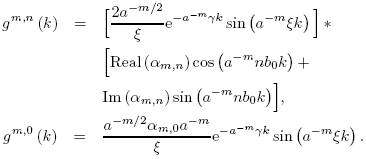 | (12) |
From Eqn. (12) follows that gm,n (0) = 0  m,n. Then the proposed model is formally given by
m,n. Then the proposed model is formally given by
 , (13)
, (13)
where zi[u(k)],i =0,... ,N are the outputs of the discrete wavelet system (DWS) transfer functions and CH represents Canonical High Level ONPWL functions.
Theorem III..1 Let K = {u Î l¥ : u¥ £ r,r > 0} and the DWS determined by the analyzing wavelet given by Eqn. (6). Also, let f : K ® l¥ a causal, time invariant nonlinear operator with fading memory on K (see Boyd and Chua (1985)). Then for a given e > 0 there exist a finite set {Gdm,n}(m,n)Î G, G Ì Z2 , and a set of High Level ONPWL functions such that for any u Î K
 (14)
(14)
being y the system output and  the output of the model defined by Eqn. (13).
the output of the model defined by Eqn. (13).
Proof: The proof is analogous to the one given in Castro et al.(1999) taking into account the results proved in Castro et al.(2002).
A. WS Transfer Function Selection
In our identification scheme, the criteria for selecting a finite number of WS transfer functions rely on the time-frequency localization properties of the rational wavelets Ym,n.Let u be as in Theorem III..1, f Î L2 (R) the function we want to identify and consider the set X of input-output samples
X= {(uk,yk ): yk = f (uk ) ,uk,yk Î R,k =1,... ,m} (15)
where the index k represents the kth sampling time. Let us denote by
W(f)=[wmin,wmax] (16)
the frequency concentration of f. Also, let us assume that we wish to approximate f on thetimeinterval
R(f)=[tmin,tmax]. (17)
The first step is to perform a frequency analysis of the given data. In order to do this, it is necessary to obtain an estimate  of W(f), based on the data X. There is a significant drawback when performing this bandwidth estimate using Fourier techniques since a generalized rectangle in time-frequency space is generated. Then, if we use this rectangle to choose the elements of the frame needed to approximate the dynamical part of the signal, we would be using more frame elements than those really needed. So, the advantage of using time-frequency localized wavelets is not fully exploited. In order to overcome this problem, it is possible to divide the time interval [tmin,tmax]into subintervals and perform the frequency analysis of the data in each of these subintervals. Finally, the analyzed time-frequency rectangles of the output signal and the time-frequency windows of the frame elements are overlapped. Then we select those frame elements whose windows cover the time-frequency rectangles of the sytem output.
of W(f), based on the data X. There is a significant drawback when performing this bandwidth estimate using Fourier techniques since a generalized rectangle in time-frequency space is generated. Then, if we use this rectangle to choose the elements of the frame needed to approximate the dynamical part of the signal, we would be using more frame elements than those really needed. So, the advantage of using time-frequency localized wavelets is not fully exploited. In order to overcome this problem, it is possible to divide the time interval [tmin,tmax]into subintervals and perform the frequency analysis of the data in each of these subintervals. Finally, the analyzed time-frequency rectangles of the output signal and the time-frequency windows of the frame elements are overlapped. Then we select those frame elements whose windows cover the time-frequency rectangles of the sytem output.
IV. EXAMPLE
In order to show the approximation capabilities of the proposed methodology, let us consider the model shown in Fig. 1, implemented in Matlab:
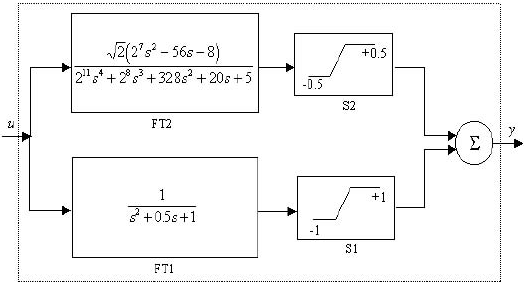
Figure 1: Nonlinear system to be identified.
The identification process was done following the steps described in Section III and are summarized below.
Step 1. In order to identify the analyzing wavelet, the system was first excited using a step function uesc obtaining an output signal yesc.The value x = 0.9 was taken to be as the frequency value where the FFT of yesc attains its maximum. The parameter g = 0.2 was chosen so that yesc and Gd0,0uesc had a similar damping in the time domain. In Fig. 2 it is possible to see the graph of both |Y(s) | and Y(t).
Step 2. Once the identification of the analyzing wavelets was done, the system was excited with a uniform random signal u, obtaining as result the output y. In order to choose the discrete transfer functions Gdm,n, we plotted the Heisenberg's box corresponding to the system output and to the wavelets Ym,n that covered it. In Fig. 3 (a), (b) and (c) we show, separately, the time-frequency boxes. As it can be seen, the time-frequency analysis gives as result that 32 DWS transfer functions were necessary.
Step 3. Since we wanted to show the approximation surface obtained with the ONPWL functions, we needed to restrict the number of transfer functions to two. One of them had to be the mother wavelet since
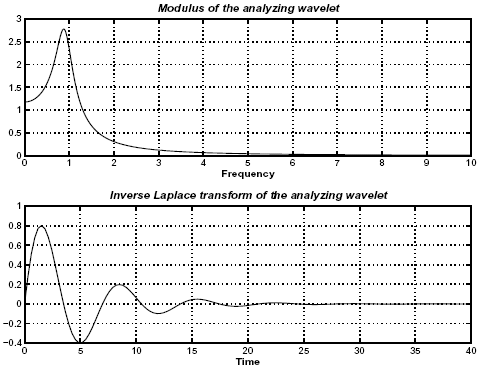
Figure 2: Analyzing wavelet used for the linear part of the identification structure.
it carries the information of the frequency content of the system that has the main contribution. So the problem was to determine the other one. The criteria for doing this were the following.
- First, the dilation parameter was taken to be m = 3 since the boxes corresponding to this value were the ones that covered the major part of the time interval of the output that the box of the mother wavelet didn't.
- Next we had to find the appropriate value of the translation step n. In first place, we discarded the indices n whose Heisenberg's boxes had nonempty intersection with the Heisenberg's box of the analyzing wavelet. Then, only n = 2,3,4 had to be considered. From these values, we chose n = 4 since we obtained the best linear least square approximation taking Gd0,0 and Gd3,4. This approximation and the corresponding error can be seen in Fig. 4.
We must remark that it is always necessary to make the above considerations for selecting the transfer functions since the wavelets do not form an orthonormal basis but a frame. Then it is not natural to choose those transfer functions such that their coefficients corresponding to the linear approximation have greatest absolute magnitude.
We took a0,0 =1 and a3,4 = 1 + i as the coefficients in Eqn. 12. It is worth to note that these are only initial values for the algorithm and can be selected differently, not affecting the final results. This is due to the fact that the frame elements already selected nor the frame properties change when different values of the coefficients am,n are chosen.
Step 4. Once the parameters of the dynamic linear part of the system were found, we had to compute the parameters of the ONPWL functions corresponding to the approximation of the nonlinear static part.
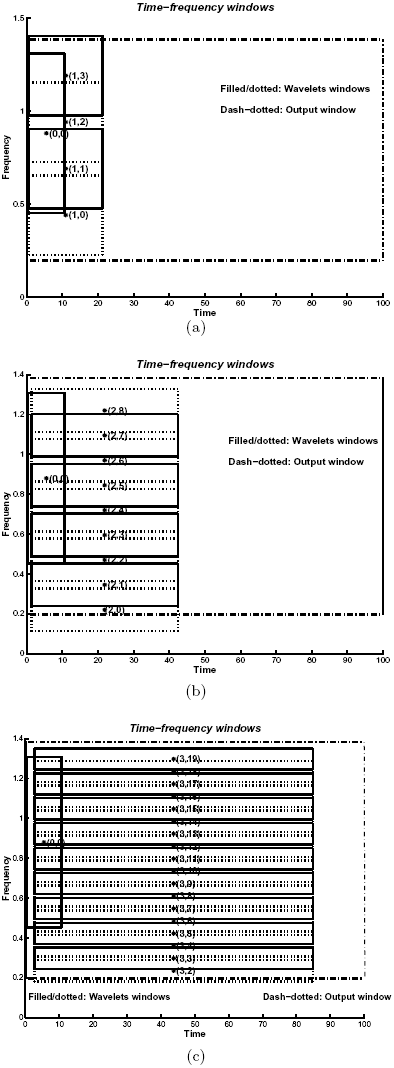
Figure 3: Boxes corresponding to: (a) Indices (0,0) ,(1,n) ,n =0,... ,3, (b) Indices (0,0) ,(3,n) ,n =2,... ,19, (c) Indices (0,0) ,(3,n) ,n =2,... ,19.
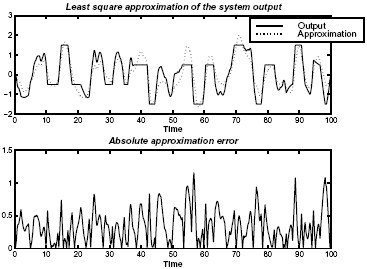
Figure 4: Least square linear approximation using Gd0,0 and Gd3,4.
First of all, we needed an algorithm that selected the output data of the linear model that guaranteed the identification of the simplices involved in the nonlinear approximation mapping. This algorithm can be written mathematically as follows. If z1,z2,... ,zp Î S are the outputs of the linear identified system, define the matrix A =[z1,z2,... ,zp]T and the vector A(k)=[z1 (k) ,z2 (k) ,... ,zp (k)]T . We choose only those samples that verify
 (18)
(18)
The constant e is a given real number related to the size of the grid used for defining the simplex of the region S. As a rule of thumb, we took e < 0.3d, d as defined in Section III.C.
In Fig. 5 (a) and (b) is plotted the first output of the linear system Gd0,0 u = z1 vs. the second one, Gd3,4 u = z2 and it is possible to see the distribution of the samples before and after applying the algorithm, respectively.
From Fig. 5 (b) the region S is taken to be S = [-2,2] ´ [-4,4] with d = 6. Finally, we found the parameters of the ONPWL functions using the toolbox CPWL implemented in Matlab by Julián (2000).
Step 5. For validating the model, we excited the system using a uniform random signal with different seed and amplitude than the one used for the identification process. In Fig. 6 (a) and (b) it is possible to see both the model validation and the validation error, respectively.
Finally, in Fig. 7 we can appreciate the nonlinear surface identified using the ONPWL functions.
V. CONCLUSIONS
In this paper, a Wiener-like identification technique has been presented based on transfer functions constructed from rational wavelets and High Level ONPWL functions. It has also been proved that this structure allows to approximate the dynamical evolution of any causal, time invariant, non-linear system with fading memory. Although the number of parameters is large, the proposed approach exhibits desired location capabilities not only for the linear part due to the wavelet approximation but also for the nonlinear block, due to the simplicial partition used in the approximation with canonical ONPWL functions. This important property is very attractive in nonlinear analysis and dynamical pattern recognition. Also, a constructive procedure to select the wavelet components of the linear dynamical part is discussed. Finally, an example showing the potentials of the present approach has been fully developed.
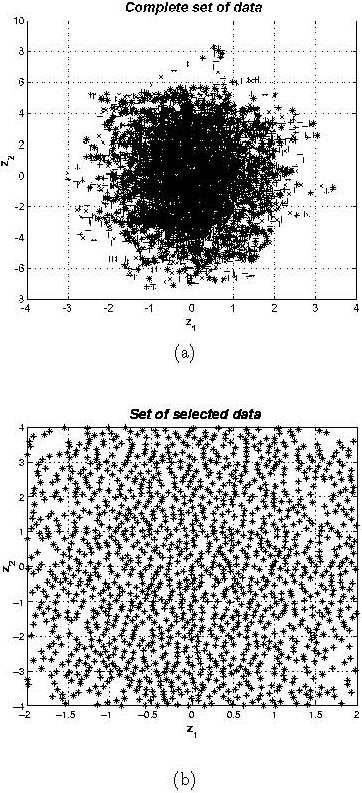
Figure 5: Distribution of the linear output samples: (a) Complete set of data, (b) Data used for the identification.
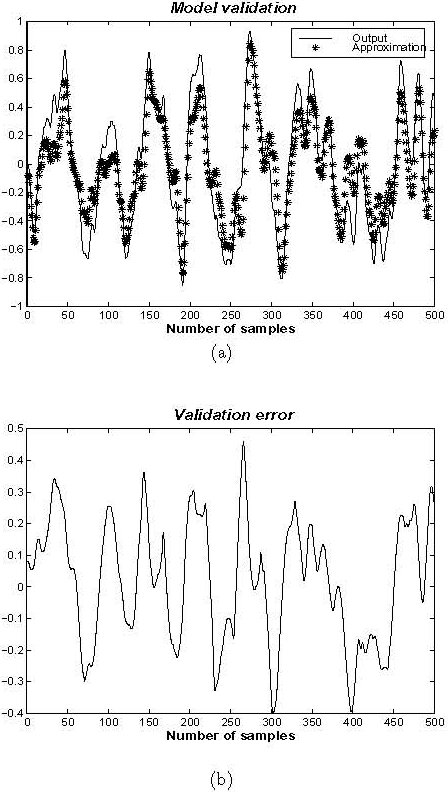
Figure 6: (a) Model validation, (b) Validation error.
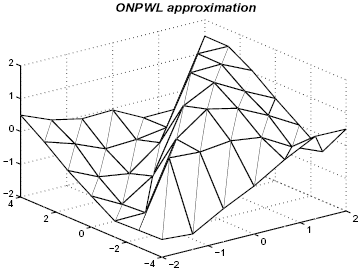
Figure 7: Nonlinear surface identified using ONPWL functions.
1 For details on frames see, for example, Duffin and Schaeffer (1952), Daubechies (1992), Mallat (1998).
2 A boundary Bis said to be covered by hyperplane Hif and only if B Ì H.
3 A simplicial boundary configuration is characterized by the property that it produces a division of the domain into proper simplices.
REFERENCES
1. Billings, S. A., "Identification of nonlinear systems - a survey", IEEE Proc. Pt. D., 6, 272-284, (1980). [ Links ]
2. Boyd, S. and L. Chua, "Fading memory and the problem of approximating nonlinear operators with Volterra series", IEEE Trans. on Cir. and Syst., CAS-32, 1150-1161, (1985). [ Links ]
3. Castro, L., O. Agamennoni and C. D'Attellis, "Rational wavelets in Wiener-like modelling", Mathl. Comput. Modelling, 35, 991-1006, (2002). [ Links ]
4. Castro, L., P. Julián, O. Agamennoni and A. Desages, "Wiener modelling using canonical piecewise linear functions", Latin Amer. Appl. Research, 29, 265-272, (1999). [ Links ]
5. Chien, M. and E. Kuh, "Solving nonlinear resistive networks using piecewise-linear analysis and simplicial subdivision", IEEE Trans. on Circ. and Syst., CAS-24, 305-317, (1977). [ Links ]
6. Chua, L. O. and S. M. Kang, "Section-wise piecewiselinear functions: canonical representation, properties and applications", Proc. IEEE, 65, 915-929, (1977). [ Links ]
7. Chui, C., An Introduction to Wavelets, In series Wavelets Analysis and its Applications, C. K. Chui Ed., Academic Press, (1992). [ Links ]
8. Daubechies, I., Ten Lectures on Wavelets, SIAM, Philadelphia, Pennsylvania, (1992). [ Links ]
9. Duffin R. J. and A. C. Schaeffer, "A class of nonharmonic Fourier series", Trans. Amer. Math. Society, 72, 341-366, (1952). [ Links ]
10. Duren P. L., Theory of Hp Spaces, Academic Press, New York, (1970). [ Links ]
11. De Figueiredo,R.J. and G. Chen, Nonlinear Feedback Control Systems: an Operator Theory Approach, Academic Press, USA, (1993). [ Links ]
12. Garnett, J. B., Bounded Analytic Functions,Academic Press, New York, (1981). [ Links ]
13. Hoffman, K., Banach Spaces of Analytic Functions, Dover Publications, New York, (1988). [ Links ]
14. Julián P., "A toolbox for the piecewise linear approximation of multidimensional functions", http://www.lcr.uns.edu.ar/personales/pjulian/cpwl.htm. [ Links ]
15. Julián P., A. Desages and O. Agamennoni, "High level canonical piecewise linear representation using a simplicial partition", IEEE Trans. on Circ. and Syst.-I, 44, 463-480, (1999). [ Links ]
16. Julián P., A. Desages and B. D'Amico, "Orthonormal high level canonical PWL functions with applications to model reduction", IEEE Trans. on Circ. and Syst.-I, 47, 702-712, (2000). [ Links ]
17. Kaiser, G., A Friendly Guide to Wavelets,Birkhäuser, Boston, (1994). [ Links ]
18. Kang S. M. and L. O. Chua, "A global representation of multidimensional piecewise-linear functions with linear partitions", IEEE Trans. on Circ. and Syst., 25, 938-940, (1978). [ Links ]
19. Korenberg, M., "Statistical identification of parallel cascades of linear and nonlinear systems", IFAC Proc. of Identification and System Parameter Estimation, 669-674, (1982). [ Links ]
20. Korenberg, M. and L. D. Paarmann, "Orthogonal approaches to time series analysis and system identification", IEEE Signal Proc. Magazine, 29-43, (1991). [ Links ]
21. Lin, J. L., H. Xu and R. Unbehauen, "A generalization of canonical piecewise-linear functions", IEEE Trans. on Circ. and Syst., 41, 345-347, (1994). [ Links ]
22. Mallat, S., A Wavelet Tour of Signal Processing,Academic Press, USA, (1998). [ Links ]
23. Pati, Y. C. and P. S. Krishnaprasad, "Rational wavelets in model reduction and system identification", Proc. of the 33rd. Conf. on Decision and Control, Lake Buenavista, Florida, (1994). [ Links ]
24. Pati, Y. C., Wavelets and Time-Frequency Methods in Linear System and Neural Networks, PhD. Thesis, University of Maryland, College Park MD, (1992). [ Links ]
25. Schetzen, M., The Volterra and Wiener Theories of Nonlinear Systems, John Wiley & Sons, (1980). [ Links ]
26. Sentoni, G., O. Agamennoni, A. Desages and J. Romagnoli, "Approximate models for nonlinear process control", AIChE Journal, 8, 2240-2250, (1996). [ Links ]
27. Söderström,T.and P. G. Stoica, System Identification,Hemel Hempstead, UK: Prentice Hall, (1989). [ Links ]
28. Sontag, E., "Worst-case identification of nonlinear fading memory systems", Automatica, 35, 1-12, (1995). [ Links ]
29. Strang, G. and T. Nguyen, Wavelets and Filter Banks, Wellesley-Cambridge Press, Wellesley MA, (1996). [ Links ]
30. Ward, N. F. and J. R. Partington, "A construction of rational wavelets and frames in Hardy-Sobolev spaces with applications to system modelling", IEEE Trans. on Inf. Theory, 36, 961-1005, (1997). [ Links ]
31. Wiener N., The Theory of Prediction, Modern Math for Engineers, Bechenbach: Mc. Graw Hill, (1956). [ Links ]














